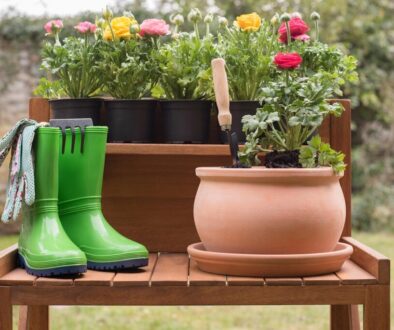Secrets to Growing Juicier Tomatoes Every Season
The Right Soil Mix: Nutrients Your Tomatoes Crave
Growing juicy, flavorful tomatoes starts from the ground up—literally. If you want a bumper crop, you need the perfect soil mix. Tomatoes are hungry plants, and they demand a nutrient-rich, well-balanced growing medium to thrive. The right mix will help your plants develop strong roots, resist diseases, and produce delicious fruit all season long.
The Foundation: Well-Draining, Nutrient-Packed Soil
Tomatoes hate soggy feet, and poor drainage can quickly lead to root rot. The ideal soil mix should be loose, well-draining, and rich in organic matter. A blend of high-quality garden soil, compost, and aerating materials like perlite or sand creates the perfect foundation.
Compost is a powerhouse ingredient because it enriches the soil with essential nutrients while improving its structure. It also introduces beneficial microbes that enhance plant health. For the perfect balance, aim for a mix of about 40% topsoil, 40% compost, and 20% aeration material.
Essential Nutrients: What Your Tomatoes Need to Thrive
Tomatoes are heavy feeders, and their success depends on the right combination of nutrients. The three primary macronutrients they crave are nitrogen (N), phosphorus (P), and potassium (K). Each plays a crucial role in plant growth and fruit production:
- Nitrogen (N): Helps develop lush, green foliage and strong stems. Too much, however, can lead to excessive leaves and fewer tomatoes.
- Phosphorus (P): Encourages deep root growth and healthy flowers, which later turn into those juicy tomatoes you love.
- Potassium (K): Boosts fruit quality, flavor, and resistance to diseases and environmental stress.
In addition to these macronutrients, tomatoes also need micronutrients like calcium, magnesium, and sulfur. Calcium prevents blossom end rot, a common tomato issue that causes black, sunken spots on the fruit. Magnesium supports photosynthesis, while sulfur aids in enzyme production and overall plant health.
Boosting Your Soil Naturally: Organic Amendments
Instead of relying solely on store-bought fertilizers, you can improve your tomato soil naturally with organic amendments. These additions provide slow-release nutrients and improve overall soil health:
- Eggshells: Crushed eggshells add calcium to prevent blossom end rot.
- Banana peels: Packed with potassium, banana peels break down over time to feed your plants.
- Coffee grounds: Used coffee grounds add nitrogen and improve soil texture.
- Bone meal: A great source of phosphorus to encourage strong root development.
- Epsom salt: Contains magnesium, which enhances nutrient absorption and photosynthesis.
Mixing these organic materials into your soil before planting ensures a steady supply of nutrients as your tomatoes grow. Plus, they improve soil texture and microbial activity, creating a thriving underground ecosystem.
The Secret Ingredient: Mulch for Moisture Retention and Nutrient Boost
Once your tomato plants are in the ground, don’t forget the finishing touch—mulch! A layer of organic mulch, such as straw, shredded leaves, or grass clippings, helps retain moisture, suppress weeds, and regulate soil temperature. As the mulch breaks down, it adds additional nutrients to the soil, keeping your tomatoes happy and well-fed.
With the right soil mix, your tomatoes will reward you with a bounty of delicious, homegrown goodness. Take the time to prepare nutrient-rich soil, and you’ll enjoy healthy plants, abundant harvests, and the unbeatable taste of sun-ripened tomatoes straight from your garden.
Pruning for Productivity: Why Less Foliage Means More Fruit
If you want your tomato plants to focus on producing fruit instead of a jungle of leaves, pruning is the secret. Many gardeners hesitate to remove any part of their plants, but strategic pruning encourages bigger, better tomatoes. Less foliage means more energy goes into fruit production, airflow improves, and your plants stay healthier.
Why Pruning Boosts Tomato Production
Tomato plants naturally want to grow bushy, but that isn’t always ideal for fruit development. When plants have too many leaves, they divert energy into growing stems and foliage instead of setting fruit. Pruning ensures that your plant directs nutrients and energy to ripen tomatoes, giving you more delicious harvests.
Pruning also improves air circulation, which helps prevent fungal diseases like blight and powdery mildew. A well-pruned plant dries faster after rain, reducing the chance of moisture-loving diseases taking over. Plus, better airflow makes it easier for pollinators to reach the flowers, boosting fruit production even more.
How to Prune Tomatoes for Maximum Yield
The key to successful pruning is knowing which parts to remove and when. Here are some simple steps to follow:
- Remove the suckers: These are the small shoots that grow in the leaf axils (where the stem meets a branch). Pinching them off early prevents excessive foliage growth.
- Trim lower leaves: Any leaves touching the soil can introduce diseases. Remove them to keep your plant healthier.
- Thin out dense areas: If your tomato plant is getting too bushy, trim a few interior leaves to improve airflow and light penetration.
- Avoid over-pruning: While removing excess growth helps, stripping too many leaves can expose your fruit to sunscald.
Prune in the morning when the plant is hydrated, and use clean, sharp tools to avoid spreading diseases.
Watering Without Cracking: Hydration Habits for Plump Tomatoes
Watering your tomatoes properly is the key to growing plump, crack-free fruit. Too much or too little water can cause stress, leading to unsightly cracks. Finding the right balance keeps your tomatoes juicy and flawless.
Why Tomatoes Crack and How to Prevent It
Tomato cracking happens when the fruit absorbs water too quickly, causing the skin to split. This usually occurs after inconsistent watering or heavy rain. To prevent this, aim for a steady watering schedule to keep moisture levels consistent.
The Best Way to Water Tomatoes
- Water deeply, not frequently: Give your tomatoes a deep soak 2-3 times a week rather than shallow daily watering.
- Use mulch: A layer of organic mulch helps retain moisture and prevents rapid drying between watering.
- Water in the morning: This allows plants to absorb moisture before the sun gets too hot, reducing evaporation.
- Avoid overhead watering: Watering at the base keeps the leaves dry, preventing fungal diseases.
Adjusting Watering Based on Growth Stage
- Seedlings need consistent moisture to establish roots.
- Flowering plants require moderate watering to encourage fruit set without excessive leafy growth.
- Fruiting tomatoes need deep, even watering to prevent cracking and ensure plump, juicy tomatoes.
By following these hydration habits, your tomatoes will stay firm, flavorful, and crack-free throughout the growing season!
Pest-Proofing Your Plants: Natural Ways to Keep Bugs Away
A thriving tomato garden is a magnet for pests, but you don’t need harsh chemicals to protect your plants. Natural pest control methods keep bugs at bay while ensuring your tomatoes stay healthy and chemical-free.
Companion Planting: Nature’s Best Defense
Some plants naturally repel pests, making them great companions for your tomatoes. Try planting basil, marigolds, and garlic near your tomatoes to deter aphids, whiteflies, and hornworms.
DIY Natural Sprays for Pest Control
Homemade pest sprays are an effective way to keep insects away. A simple mix of neem oil, dish soap, and water works wonders against common tomato pests.
Encouraging Beneficial Insects
Not all bugs are bad! Ladybugs, lacewings, and parasitic wasps feast on harmful pests, keeping your garden’s ecosystem balanced and thriving.
By using natural methods, you can keep your tomato plants safe from pests while enjoying a bountiful, chemical-free harvest!
Happy Gardening!








